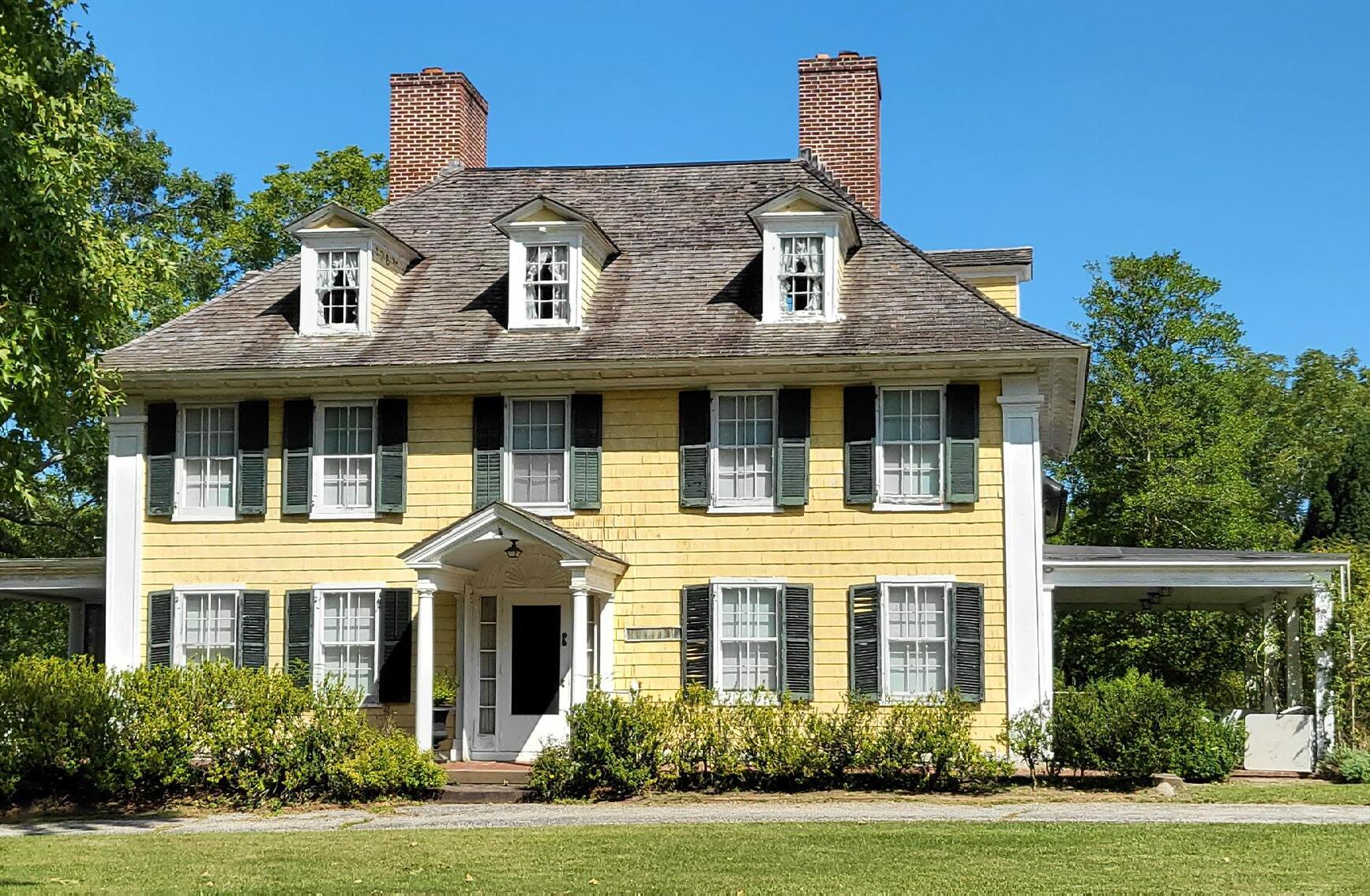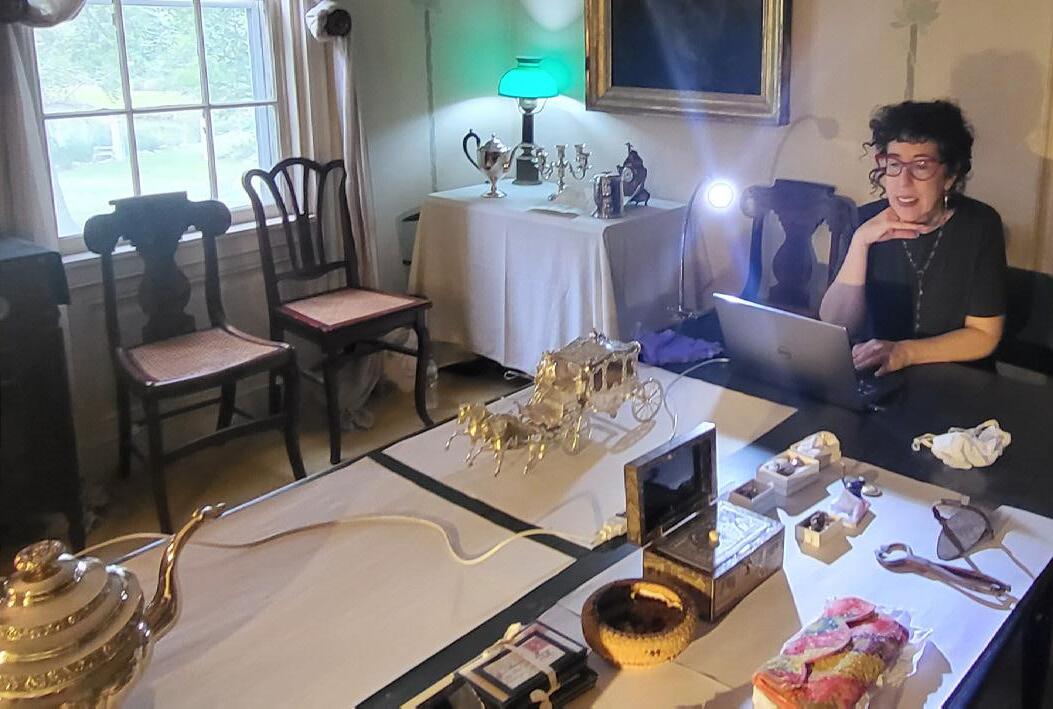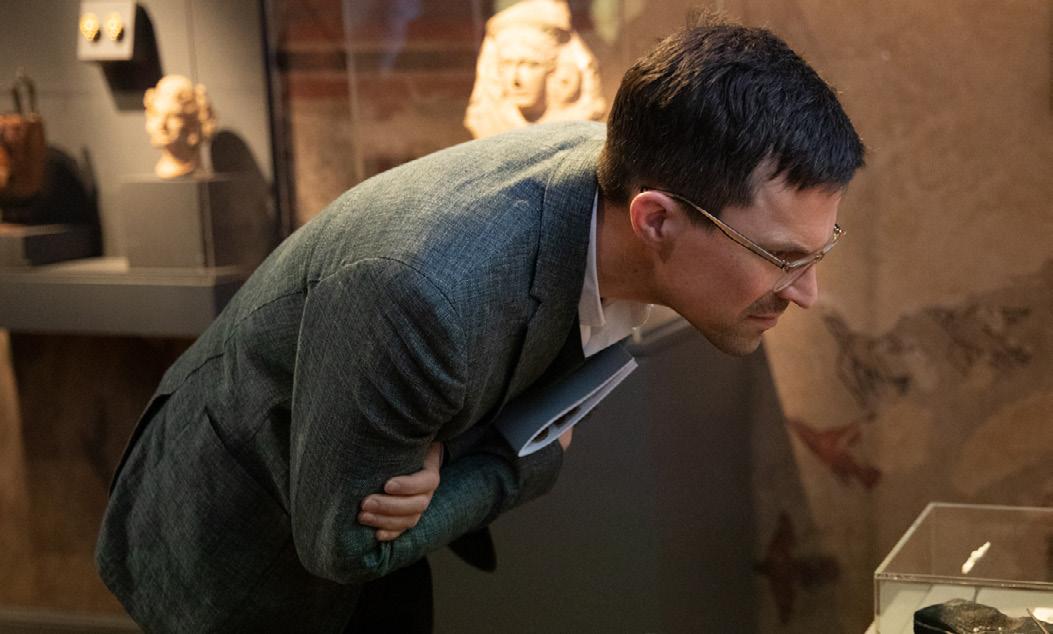
5 minute read
BGC Students Explore the History of Sylvester Manor
By Mackensie Griffin (MA ’24)
On a Saturday morning in September 2022, I boarded a bus with fellow students in Jennifer L. Mass’s course, “Science and Sylvester Manor,” and headed to the eponymous historic estate located on Shelter Island. The estate originally belonged to Nathaniel Sylvester, an Englishman who came to the New World via Amsterdam and bought Shelter Island in 1651. Sylvester, the first European to settle there, established one of the largest plantations in the northern United States. It was worked by enslaved Africans and indentured Indigenous people who raised and processed food that was shipped to the Sylvester family’s sugar plantations in Barbados. Around 1652, Sylvester built a house for himself, his wife Grizzell, and their many children. Over the next century, the house changed hands but stayed within the family. After much of the land was sold off, the property passed to Brinley Sylvester, who tore down the original house and built a Georgian-style manor in 1735. This house, called Sylvester Manor, still stands today, and it was home to Sylvester descendants until 2006.
Advertisement
Amazingly, much of the eighteenth-century home remains intact, although some additions and renovations were made during the nineteenth and twentieth centuries. In the 1980s, landscape historian Mac Griswold happened upon the property and contacted its inhabitants, Andrew and Alice Fiske. Griswold began researching the Sylvester family’s history, and after Andrew passed away, Alice and Griswold arranged for archaeological excavations on the property. Griswold ultimately wrote a book, sharing the findings from her research and the excavations. After Alice Fiske’s death, the estate was turned into an educational farm and the house opened to the public. It remains one of the few surviving remnants of a northern plantation.
“Science and Sylvester Manor” came about after BGC founder and director Susan Weber learned of the manor several years ago. Weber thought examining the house’s interior and furnishings could provide students with a unique opportunity to understand how objects can teach us about the past. BGC faculty expressed great interest in the history and material culture of the manor, so Weber proposed a collaboration: the manor would provide material for students to study, and BGC would help the manor interpret its extensive collection to aid its ongoing transformation into an educational center.
Mass, who specializes in the scientific study of the decorative and applied arts, thought that teaching a course on the house would be a compelling way to “tell the story of slavery in the North, which is a neglected piece of history.” She described her first visit to the property as “an astounding experience.” In March 2020, she met with the manor’s executive director Stephen Searl and director of history and heritage Donnamarie Barnes to discuss plans for “Science and Sylvester Manor.” After delays caused by the pandemic, BGC was finally able to offer the course in fall 2022. In the first week of class, Mass shared images of various intriguing objects we could analyze on-site using her portable X-ray fluorescence (XRF) spectrometer, a non-destructive method used to determine the elemental composition of materials. From these images, students selected the following objects for study: a Wedgwood matchbox, a silver teapot, Zuber & Cie scenic wallpaper, an American fancy chair, a mahjong set, a Chinese export lacquer tea box, mourning jewelry made of braided hair, mid-twentieth-century kitchen fittings, a Civil War–era green Union case, and the fragment of a blanket supposedly given to one of the manor’s inhabitants by the pirate Captain Cook.
Our excitement grew as we took a ferry across the Long Island Sound. Entering the property, we drove down a narrow dirt road through the woods and met Barnes in the parking lot. She led us past formal gardens to the house, covered in worn yellow shingles and overlooking a creek. Barnes pointed out a patch of lawn where a cobblestone path had been discovered during the excavations. The manor staff leaves a small section of the path exposed to remind themselves and visitors that enslaved laborers likely laid down these cobblestones.
Inside, we followed Barnes down a wide carpeted hallway and into the rooms branching off: formal parlors, a study, and a walk-in vault bursting with boxes of old letters, silverware, and ceramics. Upstairs, in one of the bedrooms, Barnes laid out a pristine Victorian girl’s mourning dress covered in black polka dots for us to admire. We climbed a steep staircase to reach the attic where the enslaved and indentured servants once slept. Two indentured brothers from the Montaukett tribe, William and Isaac Pharoah, had carved outlines of sailboats into the wall. In the depths of the sprawling basement, we encountered a heaping pile of coal and a stone sundial inscribed with the year 1679 and the phrase tempus fugit.
After this mind-boggling tour, the work of scientific analysis began. Mass connected her XRF spectrometer to her laptop, and we watched the data from each object come in. While at the house, Mass also collected microsamples from our objects if it was possible to do so without damaging them. A few weeks later, the class joined her at her lab at Maquette Fine Art Services in Long Island City to observe her use Fourier-transform infrared spectroscopy (FTIR), which measures how much infrared light each sample absorbs at different wavelengths to provide a molecular fingerprint for each sample.

This data, when compared to a database of thousands of artists’ materials, would allow us to determine what materials might be present in our objects. Guided by Mass’s expertise, we spent the rest of the semester exploring our objects’ cultural and scientific contexts through readings, presentations, and class discussions. In our final papers, we used science to tell the stories of the objects and families connected to Sylvester Manor, combining the XRF and FTIR results with historical research. These papers were shared with Barnes and Searl and will also be presented to members of the BGC community in the spring. More BGC professors will offer courses on Sylvester Manor in the future. Mass looks forward to opportunities to study excavated materials that date back to when the site was a plantation.
Caspar Meyer
In the 2022–23 academic session, I convened “Objects in Context: A Survey of Decorative Arts, Design History, Material Culture” (with Aaron Glass) and taught my elective classes “Craftscapes in Action: Makers and Making in the Ancient World” and “Digital Archaeological Heritage” (with Meredith B. Linn). I continued to serve as director of MA Studies, identifying suitable internship opportunities for our students and acting as a liaison with sponsoring institutions, this year notably the French Heritage Society and the Borscht Belt Museum in the Catskills.
I was invited to give two lectures: one titled “Beazley the Craftsman” at the workshop “Beazley for the 21st Century” at the University of Oxford and another titled “Containers within Containers: Vitrinized Museum Display as a Cultural Technique” in the “Ancient Vases in Modern Showcases: Future Possibilities for Exhibiting Ancient Greek Pottery in Museums” conference at the Allard Pierson
Museum in Amsterdam. On April 14 and 15, I convened jointly with Francesco de Angelis (Columbia University) and the New Antiquity consortium a workshop titled “Processes of Making.”

I published a book chapter on the representation of domesticity in archaeological museum displays and a journal article exploring archaeology’s theoretical articulations with possibility studies. My volume on Drawing the Greek Vase (co-edited with Alexia Petsalis-Diomidis) was released in May by Oxford University Press.
As I did last year, I led the second leg of the BGC travel program in Greece, introducing our students to archaeological field and conservation methods on the island of Despotiko in the Cyclades. This year our daytime work at the site was complemented by evening pottery sessions with Vassilis Politakis, a specialist in Bronze age ceramic technology from Crete, so that we could produce our own clay and slip and construct a kiln to fire clay figurines.










